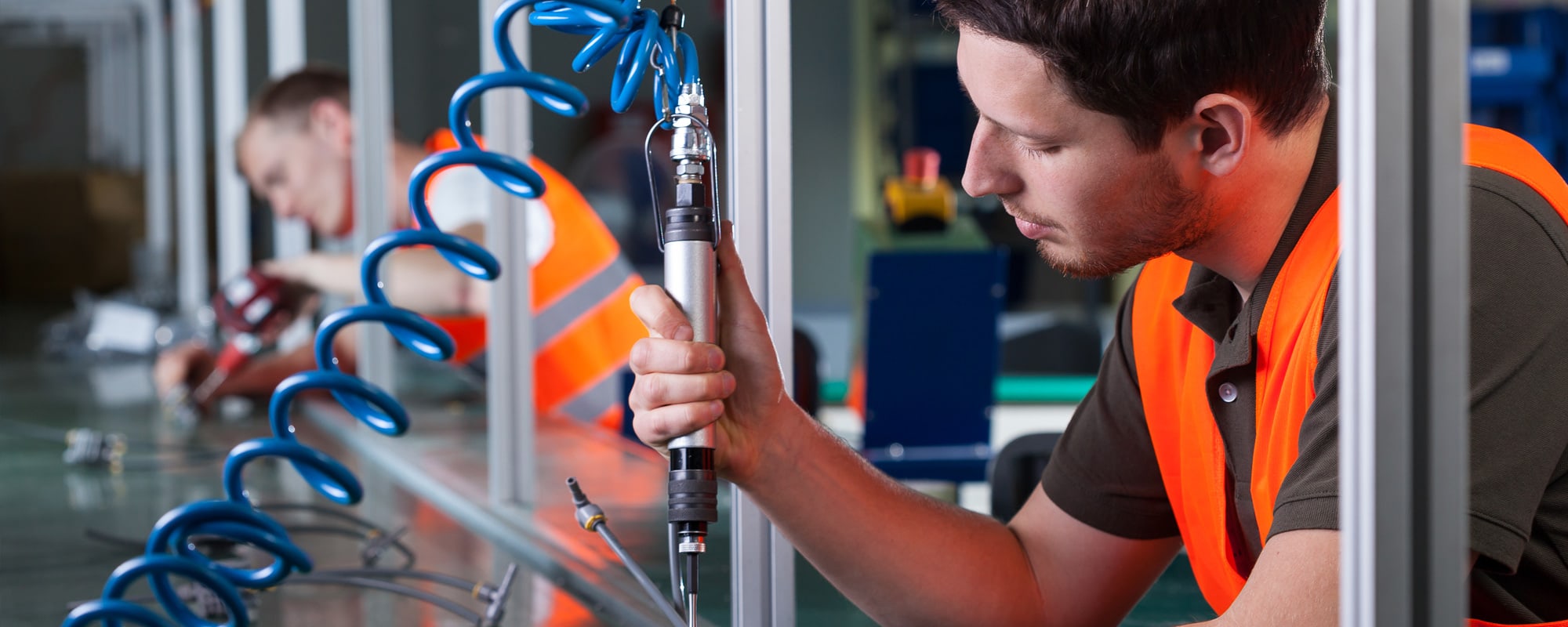RS’s “Ask The Expert” series taps into the experience and expertise of key thought leaders and subject matter experts from the more than 500 global suppliers we work closely with to bring customers solutions for their most challenging problems (and the daily ones, too).

Steve Horvath
Field Application Engineer
RS

Danee Lackey
Product Portfolio Manager
RS
What’s the latest in energy efficiency and safety when it comes to pneumatics? We’re breaking it down to five things businesses need to know from two experts with more than 40 years of combined experience in the field, RS’s Steve Horvath, field application engineer, and Danee Lackey, product portfolio manager. They cover the evolution of the industry and the advances made on two key grounds for pneumatics: safety and energy efficiency.
Here’s what you need to know:
1. Today’s philosophy is to work smarter and safer
You may have heard the phrase “work smarter, not harder” — and it’s no different for pneumatic systems. Ultimately, a safer, more efficient process saves money. “It’s all about cost,” says Horvath. “Companies are realizing now that if they’re not running efficiently, then they’re losing money. It’s about doing the same thing you were doing before, but better.”
In fact, SMC Corporation reports that only 50 percent of energy being used for compressed air systems actually goes toward production, while 30 percent is wasted due to leakage. Although “smarter” technology is usually associated with the emerging industrial internet of things (IIoT) changes, there are other “old-school” methods that are also helping pave the way, says Lackey, including:
- Enhanced testing
- Monitoring
- Safety audits
- Higher standards
- Safety Inspection checklists
- Incident reports
2. Customers are helping drive the design
Pneumatics manufacturers are constantly innovating. Lackey and Horvath say they’ve seen more improvements just in recent years than ever before. And while those improvements stem from the companies creating the products, they are further driven by the companies requesting the items, as well.
Just some of the product improvements that have emerged include ease of setup, better maintenance, increased feedback, clearer and more informative displays and indicators, more compact sizes and lower weights. “We’ve made it a priority to offer the latest and greatest pneumatic products to our customers,” says Lackey. “There’s a lot of trends in pneumatics, and we’ve made sure to stay on top of them.”
“The manufacturers we work with are top notch,” says Horvath. “They keep us abreast; they’re announcing new products. But also, it’s our customers coming to us with applications, and with the reputation of quality for the products, it’s how we research; and how the manufacturers are able to take care of what the customers are looking for.”
3. All pneumatics can benefit from one thing: state-of-the-art monitoring
If businesses are looking to improve the safety of their equipment, while cutting costs related to energy consumption, there’s one thing they need to do first: ensure that the monitoring of the system is up to the task. From there, it’s a trickle-down effect which will show other points of improvement, whether it’s the sensors, valves, tubing, fittings or more. “It’s all about monitoring or measuring — and using that data to be able to make the components more efficient,” says Horvath. “Energy is money.”
Improved monitoring means better communication, and in turn, better maintenance. Those elements are less likely to break or have failure which could result in anything from reduced energy consumption to worker safety incidents.
4. Putting the right pieces to work is key
Once the best monitoring is in place, the next step is upgrading the pieces throughout the system. Lackey says it’s the valves, especially, that are seeing some of the best gains in energy efficiency and safety features.

Once elements need an upgrade based on monitoring, it’s then a matter of working piece by piece to upgrade the overall performance.
5. There are simple things businesses can do to help improve their systems
Aside from what’s already been mentioned — like improved monitoring and upgraded parts — there are other basic steps businesses can do to get the most out of the gains made in energy and safety. Check out RS’s basic checklist to improve and maintain your system.
At the end of the day, this onus falls to the business. The good news? The return on investment often turns around within a year or two. “Safety can be a matter of life and death,” says Lackey. “For businesses, the responsibility falls on the owners to provide a safe place for workers and visitors. Also depending on the application, energy efficiency can mean the difference in tens or hundreds of thousands of dollars in energy costs saved.”
With hundreds of new products emerging, and more on the way, here are some of the item-specific advances made for safety and energy efficiency:
Cylinders:
- Rod lock cylinders that protect against unexpected startup and drift
- Spring return cylinders to return to a safe state when air pressure lost
Sensors:
- Pressure sensors to detect trapped air
- Actuator sensors offering more options for feedback and offer better visibility on indicator lights
Valves:
- Lock out tag out valves to prevent unexpected startup
- Soft start valves to start a system up gently
- Valves with spool position detection and an integrated safety limit switch to provide feedback on the operation of the valves
- Manual overrides to test valves without starting the system up
Others:
- Wireless communication on SI units decreasing the chance of disconnection
- Air prep units that are easier to set up and maintain, some with clear bowls for better visibility and easier to read indicators
- Newer pressure switches with multi-line and color displays which offer more information and better visibility








